#frontend debugging
Explore tagged Tumblr posts
Text
0 notes
Text
debugging a full stack project is fucking up your entire frontend before realizing the solution is actually just a minor fix in the backend
#yay <3#and now trying to remember what state my frontend was in before I started this fucking debug ramble#like dude mmaybe think more than 3 minutes before u start to ''fix'' things goddamnit#I'll get there again I have just commented out a bunch of stuff and gotta figure out what blocks of code were there at the same time#it's a weird puzzle here rn#codeblr#november 2024#2024
33 notes
·
View notes
Photo

Wir setzen auf Visual Studio Code! 🚀✨ Dieses leistungsstarke und vielseitige Tool unterstützt uns bei der effizienten Entwicklung und verbessert unsere Produktivität. Mit Features wie intelligenter Codevervollständigung, Debugging und Erweiterungen ist Visual Studio Code ein unverzichtbares Werkzeug in unserem Workflow. Setzt du auch Visual Studio Code ein? Teile deine Erfahrungen mit uns! 💬
#brandbuff#codeeditor#coding#codinglife#codingtools#debugging#development#devtools#editor#extensions#frontend#intellisense#javascript#opensource#productivity#programmer#programming#softwaredevelopment#softwareengineer#texteditor#vscode#vscodedev#vscodelife#vscodelove#vscodetips#vscodethemes#webdevelopment#workflow#writingcode#writethefuture
0 notes
Text
Behind the Scenes: Delving into Back-End Web Development
When you browse the internet, you encounter various websites with captivating user interfaces and seamless functionality. However, what you may not be aware of is the intricate work that happens behind the scenes to make these websites perform effortlessly. This behind-the-scenes magic is the result of back-end web development – the backbone of any successful website. In this article, we will…
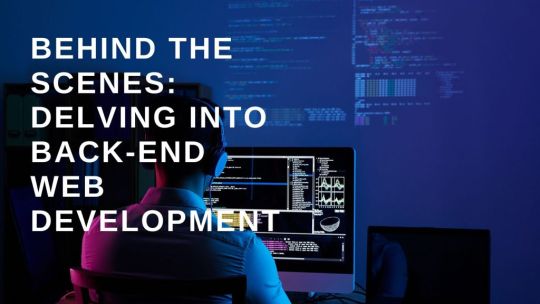
View On WordPress
#Algorithms#APIs#BackEnd#Coding#CSS#DataStructures#Debugging#DevOps#FrontEnd#FullStack#HTML#JavaScript#PHP#Programming#Python#Scripting#SoftwareDev#SQL#WebApps#WebDesign#WebDevelopment
0 notes
Text
Patch to restore debug The Sims 2 Cheat Perk
Hey all, here's the xdelta patch file to restore the cut cheat perk menu which had a lot more options than the final release.
You will need xdelta patcher to patch a "legitimately obtained" copy of The Sims 2 ISO file.
The unmodified iso file should have the following MD5 summary:
ABE440DA2101B7FF384B3711A937360F
If it doesn't match with yours it probably won't work. Enjoy! :)
13 notes
·
View notes
Text
My Journey to Becoming a Frontend Developer
In today’s fast paced digital world, frontend development has become the cornerstone of delivering exceptional user experiences. From seamless web app navigation to visually stunning interfaces, a frontend developer brings ideas to life.
Why I Want to Be a Frontend Developer and How HNG Will Help Me Achieve My Goals
My journey to becoming a frontend developer is fueled by a passion for creativity, problem solving, and the desire to create applications that users love. Joining HNG internship bootcamp as a frontend developer is the perfect opportunity to sharpen my skills and gain hands on experience while contributing to real world applications.
My Motivation for Becoming a Frontend Developer
Ever since I first interacted with web technologies, I’ve been fascinated by the magic of turning code into functional and beautiful interfaces. It’s amazing how a few lines of HTML, CSS, and JavaScript can create immersive websites and applications that millions of people rely on daily.
Another reason I gravitate toward frontend development is its user centric nature. I love the idea of creating intuitive and visually appealing designs that make people’s lives easier. I’m driven by the opportunity to make technology accessible and enjoyable for everyone.
How HNG Will Help Me Grow in the Field
The HNG internship bootcamp is a game changer for aspiring developers like me. One of the most significant challenges in the tech world is bridging the gap between theoretical knowledge and real world application. HNG provides the perfect platform to tackle this by immersing participants in a fast paced, project driven environment.
Here’s how I believe HNG will accelerate my growth:
Hands On Experience: HNG’s focus on building real life applications aligns perfectly with my goal to learn by doing. By collaborating with a team to tackle real world challenges, I will develop technical skills that can’t be learned in isolation.
Mentorship and Guidance: HNG’s experienced mentors will provide valuable insights and feedback, helping me refine my coding skills, improve my design thinking, and understand industry best practices.
Exposure to Modern Tools and Frameworks: The bootcamp emphasizes modern frontend technologies. This aligns with my goal of mastering the tools that drive innovation in the industry.
Networking Opportunities: Being part of a vibrant community of like minded developers and industry experts at HNG will expand my professional network and open doors for future opportunities.
My Goals for the Internship and How I Plan to Achieve Them
During my time at HNG, my primary goal is to become a finalist in the frontend track and I plan to achieve this through other key goals such as:
Master Frontend Fundamentals: I aim to strengthen my knowledge of HTML, CSS, JavaScript, and popular libraries like React. I plan to achieve this by actively participating in all coding sessions and tasks, seeking feedback, and consistently practicing.
Contribute to Real World Projects: One of my key goals is to contribute meaningfully to the applications we build at HNG. By collaborating with team mates, meeting deadlines, and embracing challenges, I hope to add value to every project as I move up the ladder.
Enhance Problem Solving Skills: Frontend development often involves debugging and optimizing code. I will approach every challenge as an opportunity to learn and improve my critical thinking.
Develop a Strong Portfolio: By the end of the internship, I want to have a portfolio showcasing my contributions to real world applications, demonstrating my skills to potential employers that require the service of an experienced JavaScript and React developer.
Conclusion
Becoming a frontend developer is not just a career choice for me, it’s a passion that aligns with my creative and technical interests. The HNG internship bootcamp provides a unique opportunity to accelerate my growth, gain hands on experience, and prepare for the dynamic world of frontend development. With a clear vision of my goals and a commitment to learning, I’m excited to embark on this journey and make the most of this incredible opportunity at HNG.
3 notes
·
View notes
Text
🚀 Build, Design & Develop Your Magento 2 Website
🔗 https://bit.ly/4in2YKu
I’m a Certified Magento Developer with in-depth experience in Magento 2 website development, theme customization, extension creation, and platform upgrades. I transform PSD designs into responsive, high-performing Magento stores.
💼 Magento Development Services
✔️ Magento Installation on VPS ✔️ Extension Installation & Configuration ✔️ SSL Certificate Setup ✔️ Custom Admin Grids with Add, Edit, and Delete Functions ✔️ Custom Database Table Collections ✔️ Controller Development for Handling Frontend/Post Data ✔️ Checkout Page Customization ✔️ Events & Observers Implementation ✔️ Plugin Development & Integration ✔️ Overriding Core Modules (Controllers, Blocks, Models) ✔️ Custom Transactional Email Templates ✔️ Bug Fixing & Debugging
🔄 Magento 2 Upgrade & Migration Services
🔹 Migrate from Magento 1.9 to the Latest Magento 2 Version 🔹 Seamless Migration of:
Products & Categories
Customer Data
Orders, Invoices, Shipments, Credit Memos
Store Configurations
🔹 Theme Redesign or Upgrade
🛠️ Why Choose Me?
Magento Certified
Clean, Maintainable Code
Quick Response & Friendly Support
End-to-End Development & Deployment
📩 Please message me before placing an order to ensure project alignment. 🔗 https://bit.ly/4in2YKu
Thank you!
1 note
·
View note
Text
27/11/2023 || Day 113
Remember when I said that I felt under the weather in my last post? Lol, guess who got Covid? This was my 2nd time getting it and it honestly wasn't as bad as the first time, and it was a lot more chill compared to the cold I had in early October. However, I did use it as an excuse to stay in bed and not do any programming (though I did manage to do some LeetCode to keep up with my schedule). I'm mostly bummed about having to miss my ASL class for that week, but I'm recovered and excited to go this week!
LeetCode
Like I said, I did some LeetCode questions. I did one on Thursday, Friday, and now today, and honestly the thing that I'm realizing is that when you print to standard output (i.e. for debugging), it'll slow down the performance of your result. So if it shows you only beat 5% of other users solving the problem in the same language, check to see if you have any lines that are printing to stdout and delete them. That'll speed up your solution.
Frontend Mentor REST Countries - Log #4
I decided to spend some time on this project today after neglecting it for nearly a week, and I got some serious progress done! I think all that's left to do is style the specific country page properly (for desktop and mobile) and do some string manipulation for the search function. Other than that, I think I got it working!! I'm also really proud of the search function, where you start to type letters and countries that include that substring will show up. It's helpful if you don't know the exact spelling of a country name.
13 notes
·
View notes
Text
How Generative AI is Changing Web Development

Introduction to AI in Web Development
Artificial Intelligence (AI) has revolutionized various industries, and web development is no exception. Generative AI, a subset of AI, leverages machine learning algorithms to automate and enhance web design and development processes. From code generation to performance optimization, AI is reshaping how websites are built, reducing development time while improving efficiency. As businesses and developers embrace AI-powered solutions, the landscape of web development is evolving rapidly. Generative AI Training
AI-Powered Code Generation for HTML, CSS, and JavaScript
One of the most significant contributions of generative AI in web development is its ability to generate high-quality code. AI-powered tools such as GitHub Copilot, ChatGPT, and OpenAI Codex can assist developers by writing HTML, CSS, and JavaScript code based on natural language prompts. These tools enable developers to:
Speed up the development process by automating repetitive coding tasks.
Reduce syntax errors and improve code accuracy.
Generate boilerplate code, frameworks, and complex logic efficiently.
AI-driven code generation is particularly useful for beginners, as it offers intelligent code suggestions and debugging support. Even experienced developers benefit from AI assistance, as it allows them to focus on higher-level problem-solving rather than routine coding tasks. GenAI Training
How AI Improves Responsive Design and Performance
Responsive web design is a critical factor in providing a seamless user experience across different devices. Generative AI plays a key role in optimizing website layouts, image scaling, and user interface adjustments by:
Automating Media Queries: AI can analyze screen sizes and device types to adjust layouts dynamically, ensuring optimal display on all screens.
Enhancing Performance: AI-powered tools can optimize images, minify CSS/JavaScript, and suggest performance improvements to enhance website speed.
Adaptive User Experience: AI can personalize web interfaces based on user behaviour and preferences, offering a more engaging browsing experience.
By leveraging AI in responsive design, developers can create adaptive websites that cater to diverse audiences, improving engagement and conversion rates.
Future Trends: Will AI Replace Frontend Developers?
As AI capabilities advance, a common question arises: Will AI replace frontend developers? While AI is undeniably powerful, it is unlikely to completely replace human developers in the foreseeable future. Instead, AI acts as an intelligent assistant, enhancing productivity and efficiency.
Here are key reasons why AI will not replace developers entirely:
Creativity and Intuition: AI lacks human creativity, which is essential for crafting unique and innovative web designs.
Problem-Solving Abilities: Web development involves more than just coding; it requires problem-solving, critical thinking, and understanding user needs.
Customization and Branding: AI-generated designs often lack the personal touch and brand identity that human designers create.
Ethical and Security Concerns: AI cannot independently handle ethical considerations, security vulnerabilities, and compliance requirements.
Instead of replacing developers, AI will continue to assist them, making web development faster, more efficient, and accessible to a broader audience.
Conclusion
Generative AI is transforming web development by automating coding tasks, enhancing responsive design, and improving performance. While AI-powered tools offer valuable assistance, they complement rather than replace human developers. The future of web development lies in collaboration between AI and developers, where AI streamlines processes, and developers bring creativity and problem-solving skills to the table. As AI technology advances, it will empower developers to build more sophisticated, user-friendly, and high-performing websites.
Embracing AI in web development is no longer optional but a necessity for staying competitive in the digital landscape. The key is to leverage AI strategically while maintaining human expertise to create the best possible web experiences.
Trending Courses: Data Science with GenAI, Prompt Eng, GenAI for DeVops,
Visit us: https://www.visualpath.in/online-gen-ai-training.html
#Visualpath#Ai#artificialintelligence#Aitraining#genai#statistics#generativeai#datascience#deeplearning#machinelearning#python#pythonprogramming#GenerativeAIDemo#education#software#student#ChatGPT#promptengineering#AIInnovation#AIFuture#TechForGood#aiart#aidesign
1 note
·
View note
Text
[GÓC TUYỂN DỤNG]
📢TUYỂN DỤNG FULLSTACK DEVELOPER📢
MÔ TẢ CÔNG VIỆC:
Phát triển và bảo trì hệ thống: Phối hợp với Product team, Technical Lead cũng như Frontend/Mobile engineer để xây dựng các API / nghiệp vụ phục vụ hệ thống
Tối ưu hoá: tối ưu hoá performance về API, database query, tương tác cross-servicé
Phối hợp với các bộ phận non-IT: phối hợp với các bên liên quan như vận hành sản phẩm, cskh, kinh doanh để kịp thời xử lý và cải thiện sản phẩm
Testing: có trách nhiệm test/ automation test với sản phẩm mình tạo ra, đảm bảo chất lượng code.
YÊU CẦU:
Must have (Bắt buộc):
Có kiến thức về lập trình hướng đối tượng (OOP)
Nắm vững cấu trúc dữ liệu và giải thuật (Data structures and algorithm)
Có khả năng giải quyết vấn đề tốt (Problem solving)
Hiểu biết về các giao thức HTTP, gRPC, Graphql API
Có kiến thức / kinh nghiệm sử dụng Git
Hiểu biết về nguyên lý SOLID trong lập trình
Có kiến thức về Design Pattern và ��p dụng trong lập trình.
Về Backend Development:
Có kinh nghiệm lập trình backend với NodeJS ( tối thiểu 1 năm với Typescript)
Có tối thiểu 2 năm kinh nghiệm xây dựng hệ thống chịu tải cao và độ trễ thấp
Có kinh nghiệm xây dựng các hệ thống API Restful, Graphql hoặc gRPC
Quen thuộc và có kinh nghiệm xây dựng hệ thống phân tán, microservices / serverless
Sử dụng thành thạo testing framework như Jest, mocha,…
Về Database / Data storing Experience (Kinh nghiệm về cơ sử dữ liệu, lưu trữ dữ liệu):
Sử dụng thành thạo Postgresql hoặc Mysql
Có kinh nghiệm / thành thạo MongoDB
Có kinh nghiệm sử dụng Redis trong caching
Về Frontend Development:
Có tối thiểu 2 năm kinh nghiệm lập trình frontend với ReactJS / Vue
Sử dụng thành thạo các State Management system trong lâp trình frontend
Có khả năng xây dựng website SPA/SSR 1 cách mượt mà, hiệu suất cao
Thành thạo các công cụ Frontend debugging, testing
Về Devops Experience:
Sử dụng tốt commandline trong công việc
Có khả năng xây dựng cicd pipelines cơ bản cho backend, frontend
Có hiểu biết, kinh nghiệm về docker, K8s
Ưu tiên ứng viên:
Có kinh nghiệm sử dụng Nestjs framework cho Nodejs
Có kinh nghiệm lập trình Backend với Java
Có kinh nghiệm thực chiến với cloud provider như AWS, GCP, Azure,…
QUYỀN LỢI:
Mức lương: Level Junior: Từ 13.000.000đ-20.000.000đ, Middle: Từ 25.000.000đ - 30.000.000đ hoặc thoả thuận theo năng lực
Thời gian làm việc: Từ 9h00 - 18h00 từ Thứ 2 - Thứ 6, nghỉ Thứ 7 và Chủ nhật. Làm việc từ 1-2 ngày thứ 7 trong tháng nếu có lịch retro dự án.
Đầy đủ các quyền lợi theo luật lao động: BHXH, BHYT, BHTN, Thai sản,…
Lương tháng 13, thưởng theo kết quả làm việc cuối năm, thưởng các ngày Lễ Tết 30/04, 01/05, 08/03, Tết Âm lịch, Dương lịch, sinh nhật, hiếu hỷ,…
Xét tăng lương định kỳ hàng năm;
Môi trường làm việc trẻ, năng động, với cơ hội đào tạo & thăng tiến, các hoạt động gắn kết thường xuyên như Teambuilding, du lịch.
Văn hóa trao quyền, khuyến khích nhân viên sáng tạo, cải tiến và phát triển bản thân.
Cơ hội tham gia nhiều dự án, đa dạng trong lĩnh vực công nghệ.
THÔNG TIN LIÊN HỆ VÀ ỨNG TUYỂN TẠI:
Email: [email protected]
Hotline: 0987.215.468 (Ms. Xoan) hoặc 0337.049.208 (Ms. Hoài)
Facebook/LinkedIn: Airdata Technology
Địa chỉ Công ty:
🏢Trụ sở chính: Số 77 Thoại Ngọc Hầu, Phường Hoà Thạnh, Quận Tân Phú, TP. Hồ Chí Minh
🏢Văn phòng đại diện tại Hà Nội: Toà nhà CT1 – C14 Bắc Hà, Nam Từ Liêm, Hà Nội
#Airdata
#product#full stack developer#airdata
1 note
·
View note
Text
ENDTHOUGHTS: CA-6 & POKERMAN23

Pokerman is the codename for the underlying card-game engine (not Unity's parts) of the GLITCHYPSI CA-6 game, which was made for Artfight as a means to challenge myself in a gamejam-esque fashion. I was kind of soured by the fact it didn't garner attention by the Artfight staff despite the effort I put into it, but even in light of that, I have employed techniques that I had not used before which have increased my confidence as a game developer, and I kind of enjoyed it even if I pulled an allnighter to complete this one in time, with my job and all...
Pokerman started as an exclusively CLI application, as my approach this time was to separate the actual card game logic from the game itself. Kind of an engine-frontend separation, which would allow the engine to be extensible and also ported to many other "frontends" if so I wished, so the game could exist in Unity, maybe even MonoGame, as a webapp with a C# backed server, and so on.

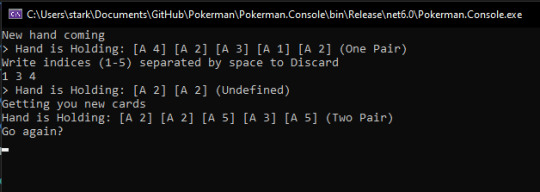
I worked on the "dealer" and card values first. The way the engine is set up is that every hand is its own instance that checks a hand's cards, and if it matches, it puts itself as the "Hand result" for that hand, and that is used to determine the weight of the hand, which can be compared to other hands to decide which is stronger.
This approach makes it easy for me to add new hands, for instance. Currently, the only existing Hand Results are all the results that pertain to the 5-card hold rules with no jokers.
What the engine does is use a set of hand instances and check from strongest to weakest until the first one yields true. The last one will always happen, as it is the bogus hand. The only chain is, as expected, the 5-card hold one.

This, the hand weight comparisons, and the tie mechanics were perhaps the places I debugged in the most to check for potential pitfalls. With the console and specific non-automated tests, it was kind of easy and fun, although... the code... might use some work.

Next I worked on the AI. With all the ML fuzz I must state that this AI is merely a random chance AI. No machine learning is involved in this AI.
All this AI does is look at a chance table given a number of cards to replace which determines the chances of getting the wanted hand with X cards to replace. The table is precomputed. (1 = 100%)

Some of the values may be probabilistcally wrong. My combinatorics aren't as polished as they used to be, and instead of using raw math I took a simpler approach and used the engine itself to generate 10k pseudorandom (System.Random() .NET 6 implementation) draws to determine a percentage. However, for the purposes of the game engine, and given extreme precision was not necessary, it's acceptable.
Risk and Contentness were a pair of values that determined whether the AI would risk discarding their current hand for a stronger one. Contentness was tested for first. If it met the margin, it would draw no new cards. Riskiness was tested for last. If it met the margin, it would go up one hand in terms of hand weight to aim for. It then gave back the result evaluation that it desired to get the cards for, or, if content, the actual hand (signifying contentness with the current hand).
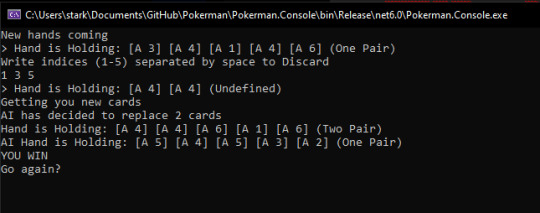
It would've made a fair game with a degree of difficulty that wasn't ever the same, and the AI risk and contentness parameters can be changed at any moment during runtime.
This was all for the underlying engine. Next was to actually link all these faceless bits of data to something the player could interact with...
...and while at work, when I had completed all my assigned development projects (under supervision of my boss, so I was not just slacking!!!) I made a placeholder set of cards.
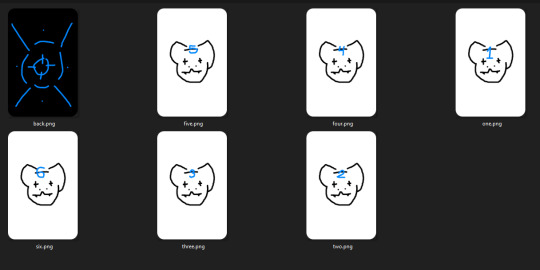
These were used to make a Unity ScriptableObject. This was also my first time working with ScriptableObjects themselves, but a dear friend had shown me their power before and I was raring to try them out for this project.
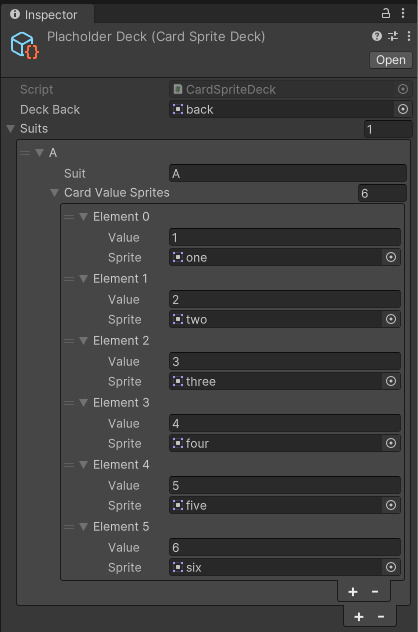
The data is reminiscent of the Pokerman Engine Card (structure below), with added relevant Unity information.

The approach of using ScriptableObjects with their own methods I could call to, for example, get the sprite for a particular Card, was extremely useful, because I could write code once and make seven thousand themed decks if I so wanted.
I used this to make the world-space and GUI space cards that you can touch in the game.
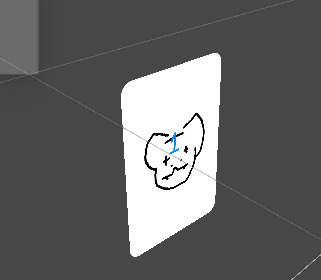

Yes. they DO flip, literally. It was the easier way to do this, and in the context of the game (and shader used) you couldn't just cheat out of that.
After the cards were set in place, it was time to make the dealer..................................... oh mama
The assets often are the hardest part of these things. They take so long because animations are something else. The first dealer was
hm
this.

Yes, that is positively a Henohenomoheji.
It was simple, sketchy and scratchy, which was perfect to test out animations with. Lord, it did take some time still. Animating is hard. Praise animators.

I had some fun playing with it, not gonna lie.
After all this, it was time for the real deal.
Oh boy. Remember when I said animation was hard? With such tight timeline to work with and having to work in my usual artstyle?
Yeah. Look at this.
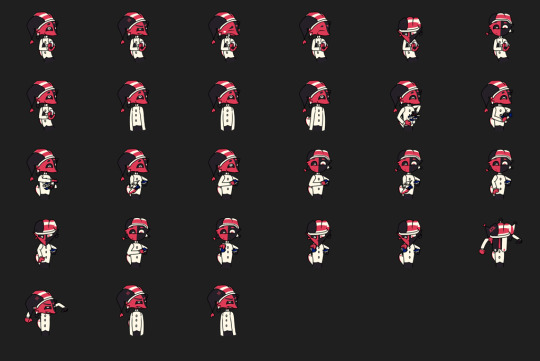
This took me a relatively mean amount of hours (entire afternoon), and it was the final day I could work on this game by the time I had started making this spritesheet.
It is composed of individual parts to make my life easier and then put together in Aseprite. It was probably the part that took me the most time out of everything else asset related. It even still has some flaws, such as the body sometimes shifting positions between frames. My bad.
After that I worked on the cards. They were abstract-ish representations of the characters I had chosen to become cards as part of my Arfight gimmick for this year, and a Casandra themed cardback.
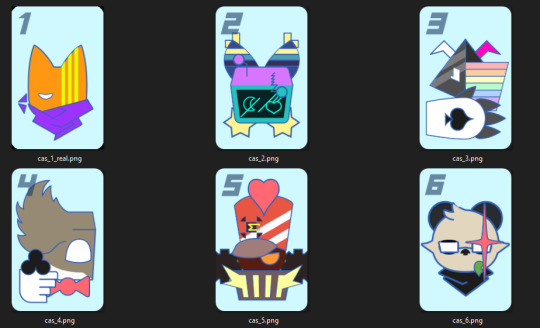

Fun fact. Card with value 1 was gonna be somebody different.
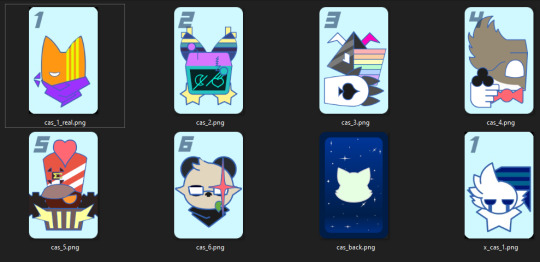
After everything was put together......... it was time for the audio. I left audio for last. I suck at music. I have said it once I will keep saying it and it does NOT seem to be getting any better, and it was not going to improve within the remaining 12 hours I had to work on the game. I could not afford time to laze off in FL Studio when I had to polish some stuff to make the game get out there. I wasn't confident in my music skills at all (in contrast to my programming and graphics skills).
I got some sfx from freesound and edited it to match, and used some of the stream assets for other sound effects related to the coins (taken straight from Mario Party 3, ha ha)
The music track... I had asked another dear friend about it when development was still in the console-app stage, but they said they wouldn't be available for such. So, I just left it for the very last moment. I was then SCRAMBLING to find a nice track to use that would not get me in trouble (I did not use Luigi's Casino's track for this reason), so I looked where I get some of my tracks I play while programming, and settled on this one...
youtube
I liked it for the ambience (background) I pulled at the last minute (because I HADN'T even drawn the background then yet!!!) and with that, it just needed to be polished and uploaded to itch and Artfight (most importantly Artfight!!!!)
I pulled an allnighter finishing the final details of the game and authoring the page for it in itch. I had done allnighters before for other games I had made for people I cherished (although those are... probably better left in the past now.)
And so while at work I published the game and posted it on Artfight.
It sure was a ride and yes I will mention again I am sort of mad I was not even mentioned among the games that were highlighted in the final Artfight blogpost despite all the effort I put into it. However... the people the game featured really liked it, and that warmed my heart and justified my effort, as well as what I learned while making it.
This game was a promise to myself to complete, since in 2021 my computer was stolen while I was making a Subway Surfers clone for the same reasoning. I wanted to get it done by all means necessary, and I can now reliably say I have completed my goal.
Hope you enjoy the game. I am going to polish it a little bit more and upload it to Newgrounds at a later date... but no more allnighters over it.
It's done. It's cute, it's small, and it's something I should've done when I first started my gamedev career instead of trying to lift the big pumpkins first without any muscle.
Maybe I'll make Pokerman open source... or make another game using it, extending it to be able to properly handle Hold'Em Poker.
Want to play the game? Click "CA-6" in the title of this post.
7 notes
·
View notes
Text
Exploring Essential Laravel Development Tools for Building Powerful Web Applications
Laravel has emerged as one of the most popular PHP frameworks, providing builders a sturdy and green platform for building net packages. Central to the fulfillment of Laravel tasks are the development tools that streamline the improvement process, decorate productiveness, and make certain code quality. In this article, we will delve into the best Laravel development tools that each developer should be acquainted with.
1 Composer: Composer is a dependency manager for PHP that allows you to declare the libraries your project relies upon on and manages them for you. Laravel itself relies closely on Composer for package deal management, making it an essential device for Laravel builders. With Composer, you may without problems upload, eliminate, or update applications, making sure that your Laravel project stays up-to-date with the present day dependencies.
2 Artisan: Artisan is the command-line interface blanketed with Laravel, presenting various helpful instructions for scaffolding, handling migrations, producing controllers, models, and plenty extra. Laravel builders leverage Artisan to automate repetitive tasks and streamline improvement workflows, thereby growing efficiency and productiveness.
3 Laravel Debugbar: Debugging is an crucial component of software program development, and Laravel Debugbar simplifies the debugging procedure by using supplying exact insights into the application's overall performance, queries, views, and greater. It's a accessible device for identifying and resolving problems all through improvement, making sure the clean functioning of your Laravel application.
4 Laravel Telescope: Similar to Laravel Debugbar, Laravel Telescope is a debugging assistant for Laravel programs, presenting actual-time insights into requests, exceptions, database queries, and greater. With its intuitive dashboard, developers can monitor the software's behavior, pick out performance bottlenecks, and optimize hence.
5 Laravel Mix: Laravel Mix offers a fluent API for outlining webpack build steps on your Laravel application. It simplifies asset compilation and preprocessing duties together with compiling SASS or LESS documents, concatenating and minifying JavaScript documents, and dealing with versioning. Laravel Mix significantly streamlines the frontend improvement procedure, permitting builders to attention on building notable consumer reviews.
6 Laravel Horizon: Laravel Horizon is a dashboard and configuration system for Laravel's Redis queue, imparting insights into process throughput, runtime metrics, and more. It enables builders to monitor and control queued jobs efficiently, ensuring most beneficial performance and scalability for Laravel programs that leverage history processing.
7 Laravel Envoyer: Laravel Envoyer is a deployment tool designed specifically for Laravel packages, facilitating seamless deployment workflows with 0 downtime. It automates the deployment process, from pushing code adjustments to more than one servers to executing deployment scripts, thereby minimizing the chance of errors and ensuring smooth deployments.
8 Laravel Dusk: Laravel Dusk is an cease-to-give up browser testing tool for Laravel applications, built on pinnacle of the ChromeDriver and WebDriverIO. It lets in builders to put in writing expressive and dependable browser assessments, making sure that critical user interactions and workflows function as expected across exceptional browsers and environments.
9 Laravel Valet: Laravel Valet gives a light-weight improvement surroundings for Laravel applications on macOS, offering seamless integration with equipment like MySQL, NGINX, and PHP. It simplifies the setup process, permitting developers to consciousness on writing code instead of configuring their development environment.
In end, mastering the vital Laravel development tools noted above is important for building robust, green, and scalable internet packages with Laravel. Whether it's handling dependencies, debugging troubles, optimizing overall performance, or streamlining deployment workflows, those equipment empower Laravel developers to supply outstanding answers that meet the demands of current internet development. Embracing these gear will certainly increase your Laravel improvement enjoy and accelerate your journey toward turning into a talented Laravel developer.
3 notes
·
View notes
Text
Unveiling the Essential Role of Full Stack Developers in Modern Web Development
Introduction:
Within the dynamic realm of web development, full stack developers stand out as indispensable assets, offering a unique blend of expertise in both frontend and backend technologies. Their versatility enables them to navigate through various aspects of web application development, from crafting user interfaces to managing databases and server-side logic.
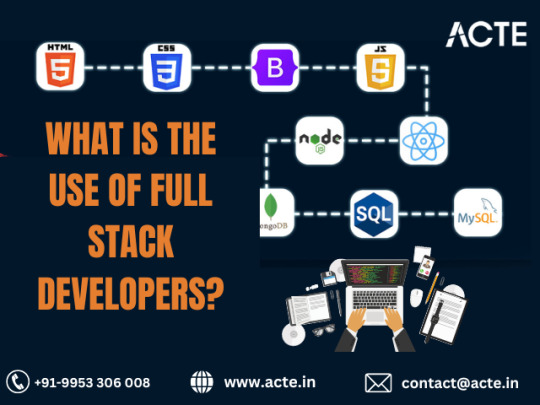
In this article, we'll delve into the essential role of full stack developers, shedding light on their pivotal contributions to streamlining development processes and fostering innovation within the industry.
1. Comprehensive Development Capabilities:
An integral aspect of full stack developers lies in their adeptness at overseeing end-to-end development projects. From initial concept to deployment, these professionals are proficient in every stage of the development lifecycle. They excel at designing intuitive user interfaces, implementing intricate frontend functionality, crafting robust backend logic, seamlessly integrating databases, and orchestrating smooth deployment of applications. This holistic approach ensures coherence and uniformity across the entirety of the project.
2. Proficient Problem Solvers:
Full stack developers possess a profound understanding of both frontend and backend technologies, equipping them with the skills to address issues at varying levels of the application stack. Their extensive skill set enables them to identify and resolve challenges efficiently, thereby minimizing downtime and ensuring the seamless operation of web applications. Whether it entails debugging frontend UI glitches or optimizing backend performance, full stack developers excel in devising effective solutions to intricate technical hurdles.
3. Collaborative Cross-Functional Engagement:
Effective collaboration is paramount in any development endeavor, and full stack developers are adept at fostering cross-functional teamwork. With their comprehensive grasp of frontend and backend technologies, they facilitate seamless communication and collaboration among designers, frontend developers, backend developers, and project managers. This cohesive teamwork ensures alignment on project objectives and facilitates smooth execution of tasks throughout the development journey.
4. Streamlined Development Processes:
The presence of a single developer proficient in both frontend and backend tasks results in a more streamlined and efficient development process. Full stack developers seamlessly transition between frontend and backend development, thereby mitigating communication gaps and reducing the need for handoffs between different team members. This streamlined approach translates into faster development cycles, rapid iterations, and ultimately, shortened time-to-market for web applications.
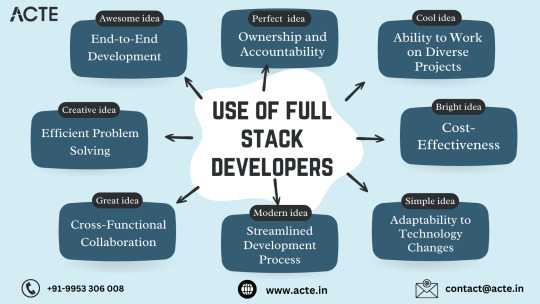
5. Adaptability to Technological Advancements:
In a landscape characterized by constant evolution, full stack developers are well-equipped to adapt to emerging trends and integrate new technologies into their projects. Their ability to stay abreast of the latest developments ensures they remain at the forefront of innovation in web development, thereby enabling them to deliver cutting-edge solutions tailored to meet the evolving needs of clients and users alike.
6. Cost-Efficiency:
Employing separate specialists for frontend and backend development can incur substantial costs for businesses. Conversely, engaging a full stack developer who can adeptly handle both roles offers a more cost-effective alternative. This approach not only reduces development expenditures but also minimizes overhead and administrative burdens associated with project management. Furthermore, having a singular point of contact for development tasks enhances communication and expedites decision-making processes.
7. Versatility in Project Execution:
Full stack developers possess the versatility to tackle a diverse array of projects, ranging from simple websites to complex web applications. This flexibility enables them to address varied challenges and contribute effectively to a wide spectrum of projects. Whether it involves crafting e-commerce platforms, content management systems, or social networking sites, full stack developers boast the expertise and adaptability to deliver bespoke solutions tailored to the unique requirements of each project.
8. Ownership and Commitment:
Often assuming ownership of the projects they undertake, full stack developers exhibit a heightened sense of accountability and dedication. This intrinsic ownership fosters a greater commitment to project success, as developers become personally invested in achieving favorable outcomes. By assuming responsibility for the entire development process, full stack developers ensure projects are delivered punctually, within budget constraints, and in adherence to the highest quality standards.
Conclusion:
In summary, full stack developers occupy a pivotal position in the realm of web development, leveraging their versatile skill sets and comprehensive understanding of frontend and backend technologies to drive innovation and excellence. By harnessing the unique capabilities of full stack developers, businesses can streamline development processes, stimulate innovation, and deliver unparalleled web experiences to their audience.
#full stack developer#education#information#full stack web development#front end development#frameworks#web development#backend#full stack developer course#technology
4 notes
·
View notes
Text
Top Frontend Development Tools to Use in 2023
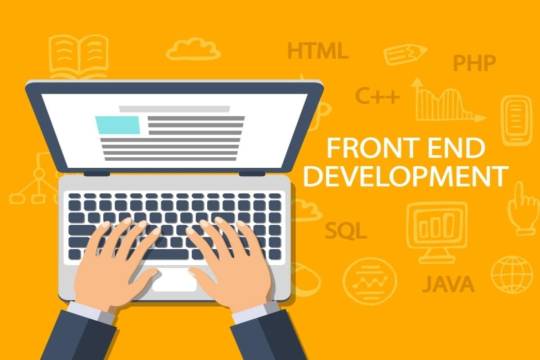
Front-End Web Development is a rapidly evolving field, with new tools and technologies constantly emerging. As we step into the year 2023, front-end developers are facing new challenges and opportunities in crafting engaging and responsive user interfaces. To stay ahead in this dynamic landscape, it's crucial to arm yourself with the right Frontend Development Tool.
In this blog, we will explore the top front-end development tools that are expected to dominate the industry in 2023. From code editors and frameworks to design tools and performance optimization, these tools will help you streamline your workflow, enhance productivity, and create cutting-edge web applications that meet the demands of modern users. Let's dive into the exciting world of front-end development and discover the must-have tools for 2023!
Top Frontend Development Tools to Use in 2023:
ReactJS:
ReactJS is a popular JavaScript library used by any Frontend Development Company for building user interfaces. With its component-based architecture, React allows developers to create reusable UI components that can be easily combined to build complex web applications.
React's virtual DOM (Document Object Model) enables efficient rendering, making it highly performant for creating interactive and dynamic user interfaces. React also has a large ecosystem of supporting tools, libraries, and community resources, making it a top choice for front-end development in 2023.
Vue.js:
Vue.js is another powerful JavaScript framework for building user interfaces. Known for its simplicity and ease of integration, Vue.js offers a flexible and scalable approach to front-end development. Vue.js follows a component-based architecture similar to React, making it highly modular and easy to understand.
Vue.js also offers features like two-way data binding, computed properties, and a comprehensive template syntax that simplifies the development process. With its growing popularity and extensive documentation, Vue.js is expected to gain more traction with any Web Development Company in 2023.
Figma:
Figma is a popular design tool that has gained significant popularity in recent years. It offers a collaborative and cloud-based approach to design, allowing front-end developers to work seamlessly with designers.
Figma offers powerful design and prototyping features, such as vector editing, component libraries, and real-time collaboration, making it a go-to tool for designing modern and responsive user interfaces. Figma also offers integrations with other design and development tools, making it a versatile choice for front-end developers in 2023.
Visual Studio Code:
Visual Studio Code (VSCode) is a widely used code editor that has become a staple in the front-end development community. With its extensive plugin ecosystem, powerful debugging capabilities, and rich set of features, VSCode provides an efficient and productive environment for writing front-end code.
VSCode offers support for a wide range of programming languages, including JavaScript, HTML, CSS, and popular front-end frameworks, making it a top choice for front-end developers in 2023.
Performance Optimization Tools:
As web applications become more complex, optimizing performance has become a crucial aspect of front-end development. Tools like Lighthouse, Webpage Test, and Google Page Speed Insights help developers analyze and optimize the performance of their web applications.
These tools offer insights and recommendations for improving areas like load times, caching, image optimization, and accessibility, helping developers create blazing-fast and user-friendly web applications in 2023.
jQuery:
jQuery is a widely used JavaScript library that has been a popular front-end development tool for many years. It provides a simplified way to interact with HTML documents, manipulate DOM elements, handle events, and make AJAX requests. jQuery offers a concise syntax and cross-browser compatibility, making it easy for developers to write efficient and interactive front-end code.
One of the key advantages of using jQuery is its simplicity and ease of use. It provides a concise and intuitive syntax that allows developers to perform common tasks, such as traversing the DOM, manipulating elements, and handling events, with just a few lines of code. This can significantly reduce the amount of code needed and simplify the development process.
Git and Version Control Tools:
Version control is an essential aspect of modern front-end development, allowing developers to collaborate, track changes, and revert to previous versions of their code.
Git, along with platforms like GitHub and GitLab, offers powerful version control capabilities, making it easy to manage the codebase, collaborate with teammates, and deploy changes to production. These tools are expected to continue to be a critical part of front-end development workflows in 2023.
CSS Pre-processors:
CSS pre-processors like Sass, Less, and Stylus have become popular tools for writing efficient and maintainable CSS code. These pre-processors offer features like variables, mixins, and nested selectors, making it easier to manage and organize CSS code for large web applications.
Conclusion:
The top front-end development tools for 2023 are expected to provide developers with powerful features that enhance their productivity, streamline their workflow, and enable them to create modern, responsive, and high-performing user interfaces.
These tools will be invaluable for Frontend Development Company India and Frontend developers in keeping up with the evolving landscape of web development. If you are looking for a Frontend Development Company in India, then connect with us now.
3 notes
·
View notes
Text
Software Development: Essential Terms for Beginners to Know
Certainly, here are some essential terms related to software development that beginners, including software developers in India, should know:
Algorithm: A step-by-step set of instructions to solve a specific problem or perform a task, often used in programming and data processing.
Code: The written instructions in a programming language that computers can understand and execute.
Programming Language: A formal language used to write computer programs, like Python, Java, C++, etc.
IDE (Integrated Development Environment): A software suite that combines code editor, debugger, and compiler tools to streamline the software development process.
Version Control: The management of changes to source code over time, allowing multiple developers to collaborate on a project without conflicts.
Git: A popular distributed version control system used to track changes in source code during software development.
Repository: A storage location for version-controlled source code and related files, often hosted on platforms like GitHub or GitLab.
Debugging: The process of identifying and fixing errors or bugs in software code.
API (Application Programming Interface): A set of protocols and tools for building software applications. It specifies how different software components should interact.
Framework: A pre-built set of tools, libraries, and conventions that simplifies the development of specific types of software applications.
Database: A structured collection of data that can be accessed, managed, and updated. Examples include MySQL, PostgreSQL, and MongoDB.
Frontend: The user-facing part of a software application, typically involving the user interface (UI) and user experience (UX) design.
Backend: The server-side part of a software application that handles data processing, database interactions, and business logic.
API Endpoint: A specific URL where an API can be accessed, allowing applications to communicate with each other.
Deployment: The process of making a software application available for use, typically on a server or a cloud platform.
DevOps (Development and Operations): A set of practices that aim to automate and integrate the processes of software development and IT operations.
Agile: A project management and development approach that emphasizes iterative and collaborative work, adapting to changes throughout the development cycle.
Scrum: An Agile framework that divides work into time-boxed iterations called sprints and emphasizes collaboration and adaptability.
User Story: A simple description of a feature from the user's perspective, often used in Agile methodologies.
Continuous Integration (CI) / Continuous Deployment (CD): Practices that involve automatically integrating code changes and deploying new versions of software frequently and reliably.
Sprint: A fixed time period (usually 1-4 weeks) in Agile development during which a specific set of tasks or features are worked on.
Algorithm Complexity: The measurement of how much time or memory an algorithm requires to solve a problem based on its input size.
Full Stack Developer: A developer who is proficient in both frontend and backend development.
Responsive Design: Designing software interfaces that adapt and display well on various screen sizes and devices.
Open Source: Software that is made available with its source code, allowing anyone to view, modify, and distribute it.
These terms provide a foundational understanding of software development concepts for beginners, including software developers in India.
#software app#software development#software developers#software development in India#Indian software developers
3 notes
·
View notes
Text
⚛️ Become a Pro React Developer in Just 7 Days! ⚛️
Join the intensive React JS Online Bootcamp led by seasoned frontend expert Mr. Sudhakar Sharma, starting July 16, 2025, at 7:15 AM IST. Designed for both beginners and intermediate developers, this course will take you through the entire React ecosystem, ensuring you're equipped with practical, job-ready skills.
🗓️ Course Dates: July 16 – July 22, 2025 🕖 Time: Daily from 7:15 AM to 7:00 AM IST 🔗 Secure Your Spot: https://tr.ee/qRRRXB
🎓 Learn From: Mr. Sudhakar Sharma – UI/UX Specialist, React Mentor & Industry Consultant

🚀 What You Will Learn:
Building React components with JSX & Props
State Management, Hooks (useState, useEffect)
Routing with React Router
Working with REST APIs & JSON
Real-world project building and best practices
Debugging tools, deployment, and portfolio tips
✅ Why Join This Bootcamp?
Live, interactive training with Q&A
Career-focused curriculum & interview support
Certificate of Completion
Beginner-friendly with hands-on coding sessions
🌐 Bonus: Discover more free demo courses and trending tech skills here:
⚛️ Become a Pro React Developer in Just 7 Days! ⚛️
Join the intensive React JS Online Bootcamp led by seasoned frontend expert Mr. Sudhakar Sharma, starting July 16, 2025, at 7:15 AM IST. Designed for both beginners and intermediate developers, this course will take you through the entire React ecosystem, ensuring you're equipped with practical, job-ready skills.
🗓️ Course Dates: July 16 – July 22, 2025 🕖 Time: Daily from 7:15 AM to 7:00 AM IST 🔗 Secure Your Spot: https://tr.ee/qRRRXB
🎓 Learn From: Mr. Sudhakar Sharma – UI/UX Specialist, React Mentor & Industry Consultant
🚀 What You Will Learn:
Building React components with JSX & Props
State Management, Hooks (useState, useEffect)
Routing with React Router
Working with REST APIs & JSON
Real-world project building and best practices
Debugging tools, deployment, and portfolio tips
✅ Why Join This Bootcamp?
Live, interactive training with Q&A
Career-focused curriculum & interview support
Certificate of Completion
Beginner-friendly with hands-on coding sessions
🌐 Bonus: Discover more free demo courses and trending tech skills here: 👉 https://linktr.ee/ITcoursesFreeDemos
📣 Limited seats available – Reserve yours now to boost your frontend development career!
🔖 #ReactJSBootcamp #FrontendWithReact #SudhakarSharma #ReactTraining2025 #WebDevelopmentCourse #JavaScriptFrameworks #LearnReactJS #ReactDeveloper #OnlineCodingCourses #TechTrainingIndia #FreeDemos #ISTBootcamps #CareerInFrontend #ReactLiveSessions #ReactHooks #ReactRouter
👉 https://linktr.ee/ITcoursesFreeDemos
📣 Limited seats available – Reserve yours now to boost your frontend development career!
#🔖#ReactJSBootcamp#FrontendWithReact#SudhakarSharma#ReactTraining2025#WebDevelopmentCourse#JavaScriptFrameworks#LearnReactJS#ReactDeveloper#OnlineCodingCourses#TechTrainingIndia#FreeDemos#ISTBootcamps#CareerInFrontend#ReactLiveSessions#ReactHooks#ReactRouter
0 notes